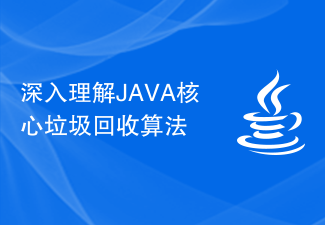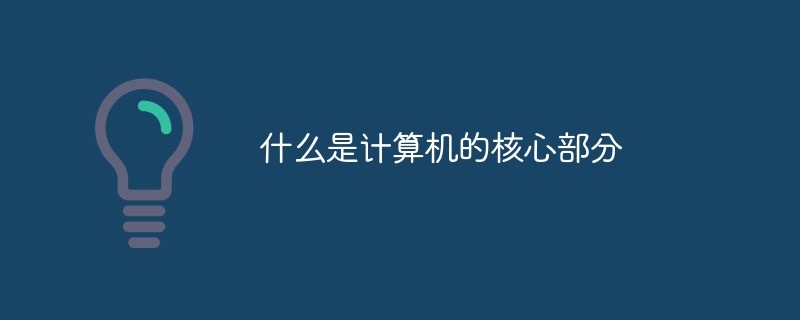/ThinkPHP/lib/core/Cache.class.php 一、示例代码 需要注意的就三个函数 1、连接缓存 public function connect($type=,$options=array()) { if(empty($type)) $type = C(DATA_CACHE_TYPE); $type = strtolower(trim($type)); $class = Cache.ucwords($type)
/ThinkPHP/lib/core/Cache.class.php
一、示例代码
需要注意的就三个函数
1、连接缓存
public function connect($type='',$options=array()) {
if(empty($type)) $type = C('DATA_CACHE_TYPE');
$type = strtolower(trim($type));
$class = 'Cache'.ucwords($type); /*根据不同的类型 调用不同的缓存引擎 默认TP只提供了 文件缓存方式 在 Lib/Driver/Cache/CacheFile.class.php*/
if(class_exists($class))
$cache = new $class($options);
else
throw_exception(L('_CACHE_TYPE_INVALID_').':'.$type);
return $cache;
}
2、取得缓存类实例
static function getInstance() {
$param = func_get_args();
return get_instance_of(__CLASS__,'connect',$param);
}这里调用了 function.php 中的 get_instance_of 函数,实际上 是吧 单例模式独立出去了
3、队列缓存
作用就是 设置缓存的长度
如果不启用缓存队列,在超时时间内,只要set缓存 就是不断添加缓存
额设置的缓存长度 如10 ,那么根据队列“先进先出”的原则,当缓存数量大于10的时候,会删除队首的缓存。
二、值得说的编程小细节:
1、
public function __get($name) {
return $this->get($name);
}
public function __set($name,$value) {
return $this->set($name,$value);
}
这里体现了面向对象 多态思想
子类继承Cache类, Cache类中的$this->set() 是调用的子类中的方法
2、function.php 中的 get_instance_of 函数
把单例模式独立出来 是比较不错的方式
 如何在 Windows 11、10 中启用或禁用核心隔离内存完整性Apr 27, 2023 pm 10:43 PM
如何在 Windows 11、10 中启用或禁用核心隔离内存完整性Apr 27, 2023 pm 10:43 PM如今,大多数Windows用户都使用虚拟机。当他们系统上的核心隔离被禁用时,安全风险和攻击是可以预料的。即使设置了核心隔离,如果用户升级了系统,也会禁用内存完整性。如果启用核心隔离,系统将免受攻击。对于经常使用虚拟计算机的人,强烈建议他们启用它。如果您正在寻求有关如何在任何Windows11系统上启用或禁用核心隔离内存完整性的说明,此页面可以提供帮助。如何使用Windows安全应用在Windows11中启用或禁用核心隔离内存完整性第1步:按Windows键并键入Windows安全
 苹果M3 Ultra推出全新版本,新增32个CPU核心和80个GPU核心Nov 13, 2023 pm 11:13 PM
苹果M3 Ultra推出全新版本,新增32个CPU核心和80个GPU核心Nov 13, 2023 pm 11:13 PM这款芯片可能会搭载高达80个GPU核心,进而成为M3系列中性能最强大的产品。Max两倍核心数量从M1与M2系列的发展模式来看,苹果的「Ultra」版芯片基本上是「Max」版本的两倍核心数量,这是因为苹果实际上将两颗Max芯片透过内部连接技术结合起来,形成了M1Ultra与M2Ultra。80个GPU核心M3Ultra可能拥有「高达80个图形处理核心」。这一预测基于苹果芯片的发展路径:从基础版到「Pro」版,再到图形核心数量翻倍的「Max」版,以及CPU和GPU核心都翻倍的「Ultra」版。举例来
 Golang的核心是否仅限于单核运行?Feb 29, 2024 pm 06:39 PM
Golang的核心是否仅限于单核运行?Feb 29, 2024 pm 06:39 PM《Golang的核心是否仅限于单核运行?》Golang作为一门现代化的编程语言,在并发处理和性能方面有着出色的表现。然而,有人对Golang的核心是否仅限于单核运行提出了质疑。在本文中,我们将探讨Golang的并发特性以及它在多核处理器上的表现,并通过具体的代码示例来解答这个问题。Golang在语言层面对并发处理进行了深入的设计和支持。它使用goroutin
 Go语言的核心编写语言是什么?Mar 27, 2024 am 11:30 AM
Go语言的核心编写语言是什么?Mar 27, 2024 am 11:30 AM标题:Go语言的核心编写语言是什么?Go语言是一种由Google开发的编程语言,被称为“云时代的C语言”。它具有高效的并发设计、简洁的语法和强大的性能,因此在云计算、大数据和人工智能等领域得到了广泛的应用。在Go语言中,核心的编写语言是Go语言本身,通过使用Go语言的原生特性来实现各种功能。Go语言的语法简洁、易读易写,其中核心的编写语言主要包括以下几个方面
 深入理解JAVA核心垃圾回收算法Nov 08, 2023 am 11:30 AM
深入理解JAVA核心垃圾回收算法Nov 08, 2023 am 11:30 AM深入理解JAVA核心垃圾回收算法,需要具体代码示例垃圾回收(GarbageCollection,简称GC)是现代编程语言里一项非常重要的功能,它可以自动管理内存的分配和释放,避免了手动管理内存的复杂性和可能的错误。在JAVA语言中,垃圾回收算法是JAVA虚拟机(JVM)的核心功能之一,今天我们将深入理解JAVA核心垃圾回收算法,并且看一些具体的代码示例。一
 什么是计算机的核心部分Dec 11, 2020 am 10:24 AM
什么是计算机的核心部分Dec 11, 2020 am 10:24 AMCPU(中央处理器)是计算机的核心部分;中央处理器是电脑中的核心配件,其主要功能是解释计算机指令以及处理计算机软件中的数据;中央处理器主要包括控制器和运算器两部分。
 java技术的核心是什么Dec 25, 2023 pm 04:24 PM
java技术的核心是什么Dec 25, 2023 pm 04:24 PMJava技术的核心包括Java虚拟机、垃圾收集机制、代码安全检测和丰富的API库和工具支持。详细介绍:1、Java虚拟机,是一个虚拟的计算机,它模拟了一个计算机的硬件系统,并负责执行Java字节码,通过JVM,Java程序可以在任何支持JVM的设备上运行,实现了“一次编写,到处运行”的跨平台特性;2、垃圾收集机制,Java的垃圾收集器自动管理内存,自动回收不再使用的对象等等。
 M3 Max芯片:苹果推出16核心CPU与40核心GPU的强大测评Aug 21, 2023 pm 08:49 PM
M3 Max芯片:苹果推出16核心CPU与40核心GPU的强大测评Aug 21, 2023 pm 08:49 PMApple于周日正在测试全新M3的基本版本,并搭载在全新的Macmini上。公司已在高端MacBookPro上测试最高达40GPU核心的芯片。尽管苹果尚未公开M3芯片,但工程师已在测试更强大的版本。彭博的消息来源指,有一台代号J514的全新手提电脑,搭载了16核心CPU和40核心GPU的AppleSilicon芯片,这台电脑很可能是全新的MacBookPro。M3最大VSM2最大具体来说,新MacBookPro的高端版本将由M3Max芯片推动,具有12个高性能核心以及4个性能核心。与M2Max相


热AI工具

Undresser.AI Undress
人工智能驱动的应用程序,用于创建逼真的裸体照片

AI Clothes Remover
用于从照片中去除衣服的在线人工智能工具。

Undress AI Tool
免费脱衣服图片

Clothoff.io
AI脱衣机

AI Hentai Generator
免费生成ai无尽的。

热门文章

热工具

SublimeText3 Mac版
神级代码编辑软件(SublimeText3)

适用于 Eclipse 的 SAP NetWeaver 服务器适配器
将Eclipse与SAP NetWeaver应用服务器集成。

Atom编辑器mac版下载
最流行的的开源编辑器

mPDF
mPDF是一个PHP库,可以从UTF-8编码的HTML生成PDF文件。原作者Ian Back编写mPDF以从他的网站上“即时”输出PDF文件,并处理不同的语言。与原始脚本如HTML2FPDF相比,它的速度较慢,并且在使用Unicode字体时生成的文件较大,但支持CSS样式等,并进行了大量增强。支持几乎所有语言,包括RTL(阿拉伯语和希伯来语)和CJK(中日韩)。支持嵌套的块级元素(如P、DIV),

SecLists
SecLists是最终安全测试人员的伙伴。它是一个包含各种类型列表的集合,这些列表在安全评估过程中经常使用,都在一个地方。SecLists通过方便地提供安全测试人员可能需要的所有列表,帮助提高安全测试的效率和生产力。列表类型包括用户名、密码、URL、模糊测试有效载荷、敏感数据模式、Web shell等等。测试人员只需将此存储库拉到新的测试机上,他就可以访问到所需的每种类型的列表。





